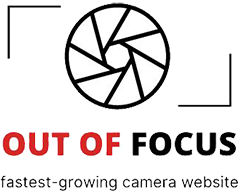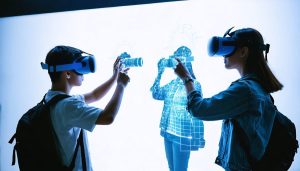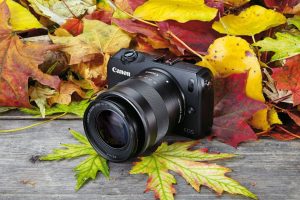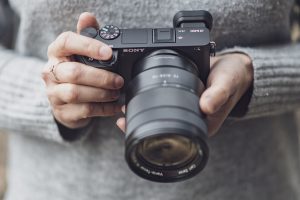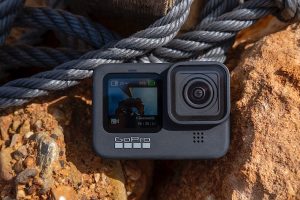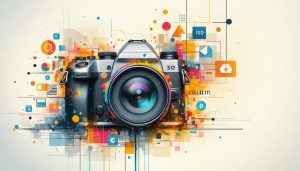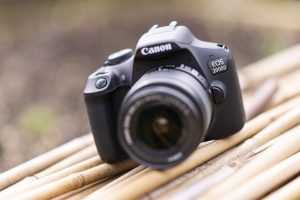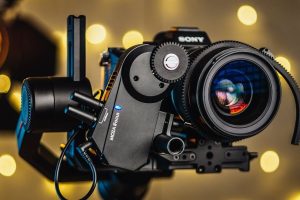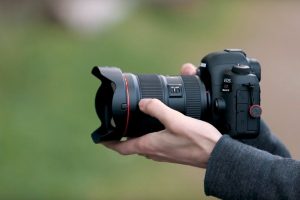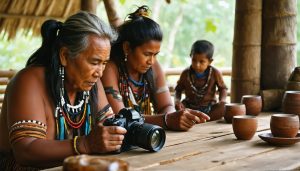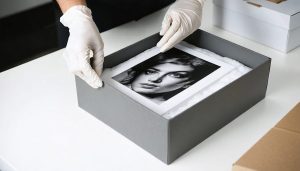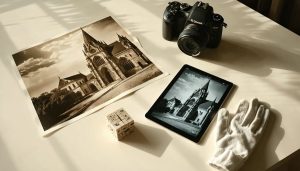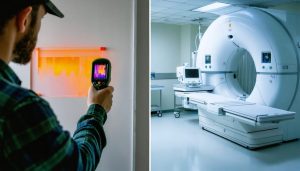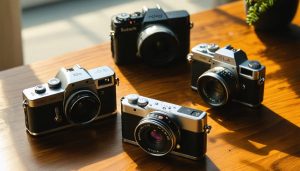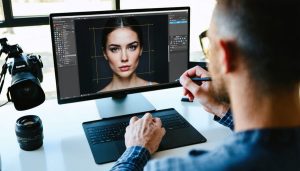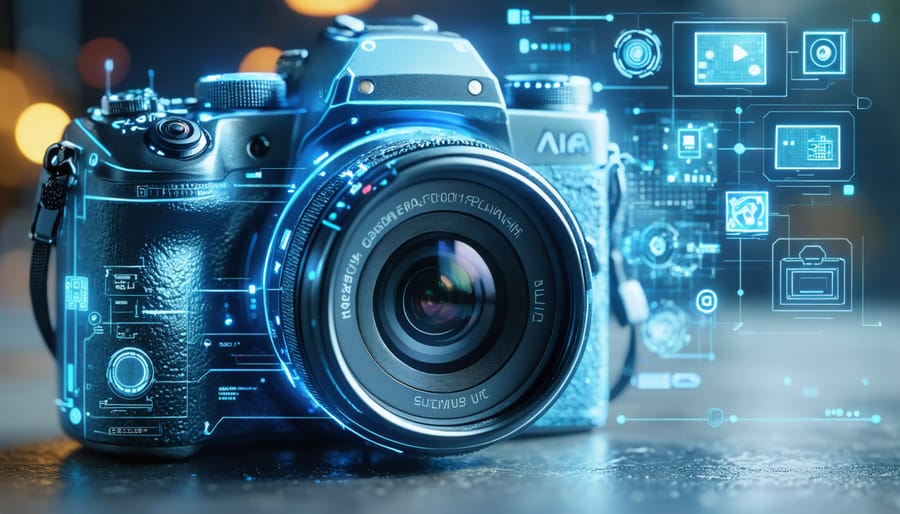
Photography innovation stands at the threshold of a revolutionary era, where artificial intelligence meets artistic vision. From computational photography that captures perfect shots in near-darkness to AI-powered autofocus systems that track subjects with unprecedented precision, today’s photographic technology pushes beyond traditional boundaries. These advancements aren’t just incremental improvements—they’re fundamentally reshaping how we capture, process, and share visual stories.
The convergence of machine learning algorithms with sensor technology has birthed cameras that think and adapt in real-time, while breakthrough developments in mobile photography have transformed smartphones into professional-grade imaging tools. What once required a studio full of equipment can now be achieved with devices that fit in our pockets, democratizing creative expression for millions worldwide.
As we witness this technological renaissance in photography, the line between professional equipment and consumer devices continues to blur. Innovations in computational imaging, quantum sensors, and adaptive optics aren’t just changing what’s possible—they’re redefining what it means to be a photographer in the digital age. Whether you’re a seasoned professional or an aspiring creator, understanding these emerging technologies is crucial for staying at the forefront of visual storytelling.
AI-Powered Photography Tools
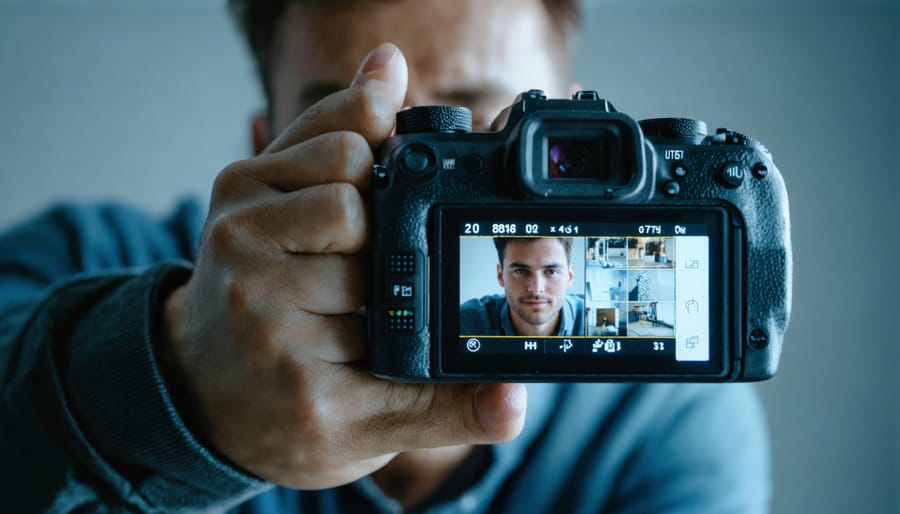
Smart Composition Assistants
Smart composition assistants powered by artificial intelligence are revolutionizing how photographers frame their shots. These AI-driven tools analyze scenes in real-time, offering suggestions for optimal composition based on established photography principles like the rule of thirds, leading lines, and golden ratio.
Modern cameras and smartphone apps now incorporate intelligent scene recognition that can identify subjects, predict movement patterns, and even suggest the best moment to capture. For instance, some systems can detect facial expressions and automatically trigger the shutter when everyone in a group shot is smiling naturally.
These assistants go beyond basic framing guidance. Advanced algorithms can now analyze depth, lighting conditions, and subject positioning to recommend camera settings that complement the intended composition. Some systems even offer alternative composition suggestions, helping photographers explore creative perspectives they might not have considered.
For wildlife and sports photographers, AI composition tools are particularly valuable. They can track subjects, anticipate movement, and maintain optimal framing even in fast-paced situations. Portrait photographers benefit from intelligent eye-tracking and pose suggestions that ensure subjects are captured at their best angles.
While these tools are incredibly helpful, especially for beginners, they’re designed to enhance rather than replace creative decision-making. Experienced photographers often use them as a starting point, combining AI suggestions with their artistic vision to create unique and compelling images.
Automated Subject Tracking Systems
Modern cameras have revolutionized the way we capture moving subjects through sophisticated subject tracking systems. These intelligent systems use advanced algorithms to identify, lock onto, and follow subjects as they move through the frame, ensuring sharp focus even in challenging situations.
At the heart of this technology is AI-powered subject recognition, which can instantly detect and track various subjects including people, animals, vehicles, and even specific body parts like eyes. For instance, Eye AF (Auto Focus) has become a game-changer for portrait photographers, maintaining precise focus on a subject’s eyes even when they’re moving or turning their head.
Professional sports photographers particularly benefit from these systems, which can track athletes moving at high speeds across complex backgrounds. The latest tracking systems can process information at up to 120 frames per second, predicting subject movement and adjusting focus accordingly.
What makes these systems truly remarkable is their ability to maintain focus even when subjects are temporarily obscured or move behind obstacles. This predictive tracking, combined with machine learning algorithms that improve over time, means photographers can concentrate more on composition and timing rather than struggling with focus.
For wildlife photographers, these tracking systems have been transformative, offering the ability to maintain focus on animals moving erratically through vegetation or changing light conditions. Even entry-level cameras now include some form of subject tracking, making this technology accessible to enthusiast photographers looking to improve their action and wildlife photography.
Revolutionary Stabilization Technology
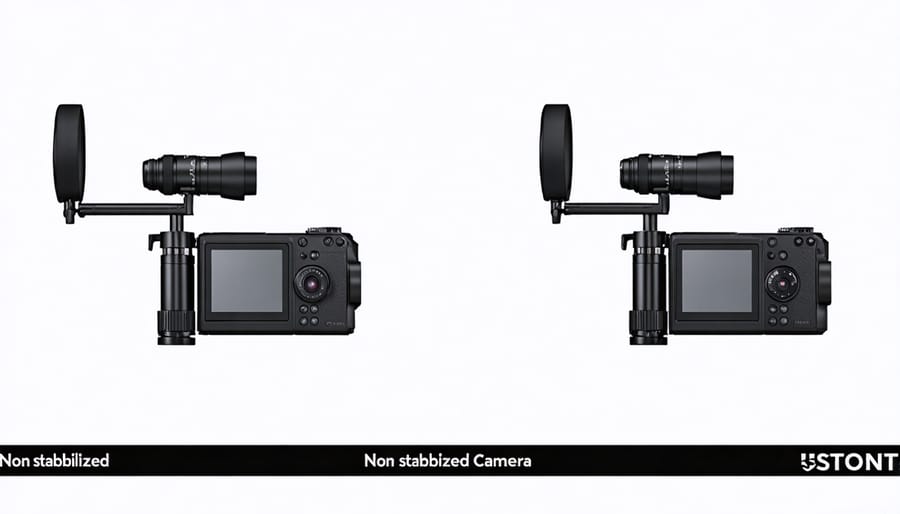
Hybrid Stabilization Systems
Modern hybrid stabilization systems represent a groundbreaking fusion of optical and digital stabilization technologies, offering photographers unprecedented control over image sharpness. By combining lens-based optical stabilization with sensor-shift mechanisms and digital corrections, these systems can compensate for camera movement across five or even six axes of motion.
Think of hybrid stabilization as having both a steady hand and a digital safety net. While optical stabilization physically moves lens elements to counter shake, the digital component analyzes movement patterns and makes real-time micro-adjustments to the sensor position. This dual approach is particularly effective in challenging situations like walking shots or low-light photography where longer shutter speeds are necessary.
Latest innovations in this field include AI-powered motion prediction, which anticipates camera movement before it happens, and adaptive stabilization that adjusts its intensity based on shooting conditions. Some systems can now deliver up to 8 stops of stabilization, making handheld shots possible in situations that previously demanded a tripod.
For videographers, hybrid stabilization has been transformative, enabling smooth, gimbal-like footage straight out of camera. This technology has become especially valuable for content creators who need to maintain professional-quality results while shooting on the move.
Gimbal Breakthroughs
Recent breakthroughs in gimbal technology have revolutionized how photographers and videographers achieve smooth, professional-looking shots. The emergence of AI-powered gimbals has transformed stabilization from a purely mechanical process to an intelligent system that anticipates and corrects movement patterns.
Modern gimbals now feature enhanced battery life, with some models lasting up to 15 hours on a single charge. Manufacturers have also significantly reduced weight while improving build quality, making all-day shoots more comfortable. The integration of wireless connectivity allows seamless control through smartphone apps, enabling complex motion sequences and time-lapses with just a few taps.
Perhaps most exciting is the development of hybrid stabilization systems that combine mechanical and electronic stabilization. These systems can handle everything from subtle hand tremors to more dramatic movements while walking or running. Some models now include object tracking capabilities, allowing solo creators to film themselves while maintaining perfect focus and framing.
For photographers shooting in challenging conditions, new weather-sealed options provide peace of mind during outdoor sessions. The latest models also feature quick-release plates and tool-less balancing systems, dramatically reducing setup time and allowing creators to focus more on their craft.
Next-Generation Lighting Solutions
Smart LED Systems
The evolution of LED lighting in photography has taken a quantum leap with the introduction of programmable smart lighting solutions that are revolutionizing how we illuminate our subjects. These advanced systems combine wireless connectivity, smartphone control, and precise color management to give photographers unprecedented creative control.
Modern LED panels now offer features like CCT (Correlated Color Temperature) adjustment, allowing seamless transitions between daylight and tungsten lighting without changing filters. Some models even include built-in effects like lightning simulation, fire flicker, and police lights, expanding creative possibilities for both still photography and videography.
What makes these systems truly revolutionary is their ability to synchronize multiple lights through wireless networks. Photographers can adjust intensity, color temperature, and effects across several units simultaneously through intuitive smartphone apps. This level of control was previously only available in high-end studio setups, but is now accessible to photographers at various skill levels.
The integration of scene-recognition technology means these lights can automatically adjust their output based on the subject matter, ambient lighting conditions, and camera settings. For portrait photographers, some systems even include skin tone optimization features that automatically adjust color temperature and intensity to achieve the most flattering results.
Battery life has also improved significantly, with many units offering several hours of continuous use at full power, making them practical for both studio and location work.
Portable Studio Solutions
Gone are the days when professional-grade lighting required a van full of equipment. Today’s portable studio solutions are revolutionizing how photographers work on location, offering studio-quality results in incredibly compact packages.
LED panels have become a game-changer, with units like the Aputure MC RGBWW fitting in your pocket while providing full-color control and impressive output. These lightweight powerhouses can be mounted virtually anywhere, allowing photographers to create dramatic lighting setups in tight spaces.
Collapsible softboxes and diffusers now pack down to the size of a laptop, yet deploy in seconds to create beautiful, soft light. Modern designs incorporate innovative materials that maintain rigidity while weighing significantly less than traditional modifiers.
Battery-powered strobes have also evolved dramatically, with units like the Godox AD200 Pro offering studio-level power in a package smaller than a water bottle. These portable flashes integrate seamlessly with wireless triggers and smartphone apps, giving photographers complete control over their lighting setup from a distance.
Perhaps most impressive are the all-in-one lighting kits that combine multiple light sources, modifiers, and stands in a single carrying case. These integrated solutions allow photographers to transform any location into a professional studio within minutes, without sacrificing image quality or creative control.
For photographers working in challenging environments, weather-sealed options now provide peace of mind during outdoor shoots, ensuring consistent performance regardless of conditions.
Mobile Photography Accessories
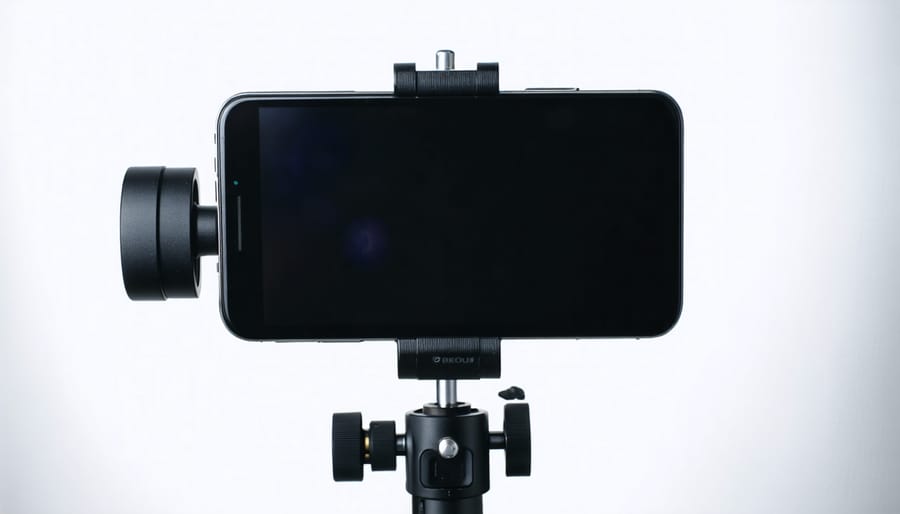
Professional-Grade Mobile Lenses
The evolution of smartphone photography has taken a giant leap forward with the introduction of professional-grade mobile lenses, transforming everyday devices into powerful creative tools. These attachable lenses expand the capabilities of your smartphone’s built-in camera system, offering versatility that rivals traditional DSLR setups.
Modern mobile lens systems typically include macro, wide-angle, and telephoto options, with some manufacturers even offering anamorphic lenses for cinematic-style shooting. Premium brands like Moment and Zeiss lead the market with their optically superior glass elements and precision engineering, delivering impressive edge-to-edge sharpness and minimal distortion.
What sets professional-grade mobile lenses apart is their multi-element design and advanced coating technologies. These features effectively reduce chromatic aberration and lens flare while maintaining color accuracy across the frame. The mounting systems have also evolved, with magnetic and bayonet-style attachments ensuring precise alignment and quick swapping between lenses.
For landscape photographers, wide-angle lenses with 18mm equivalent focal lengths capture sweeping vistas without the distortion common in cheaper alternatives. Macro enthusiasts benefit from lenses offering up to 10x magnification, revealing intricate details in subjects as small as water droplets or insect wings.
While these accessories represent a significant investment compared to basic clip-on lenses, their durability and optical quality make them worthwhile for serious mobile photographers. The portability factor cannot be understated – carrying a few small lenses in your pocket provides creative flexibility that would otherwise require multiple bulky camera lenses.
Mobile Camera Controls
Modern smartphones have revolutionized the way we control and capture images, offering capabilities that rival professional cameras. The latest mobile camera control systems combine intuitive interfaces with advanced features, giving photographers unprecedented creative freedom in their pocket.
Manual controls have become increasingly sophisticated, allowing users to adjust ISO, shutter speed, and aperture with precision. Pro modes on flagship phones offer RAW image capture, ensuring maximum editing flexibility in post-production. Focus peaking, a feature once exclusive to high-end cameras, now helps mobile photographers achieve perfect focus by highlighting sharp areas in real-time.
Gesture controls have transformed how we interact with our phone cameras. Simple hand movements can trigger the shutter, adjust zoom levels, or switch between camera modes. Voice commands add another layer of convenience, especially for self-portraits and group shots where touching the device isn’t practical.
Custom shooting modes have evolved beyond simple presets. Photographers can now save their preferred settings combinations, creating personalized modes for different scenarios like street photography, low-light shooting, or action sequences. Additionally, exposure bracketing and focus stacking have become standard features, enabling complex techniques previously possible only with dedicated cameras.
The integration of AI-powered scene recognition helps optimize settings automatically, while still allowing manual override when desired. This balance between automation and control makes advanced photography techniques accessible to beginners while providing the depth that experienced photographers demand.
The rapid pace of photographic innovation shows no signs of slowing down, transforming both how we capture images and what’s possible in photography. From computational photography that pushes the boundaries of low-light performance to AI-powered autofocus systems that can track subjects with unprecedented accuracy, these advances have democratized professional-quality imaging for photographers at all levels.
Looking ahead, we can expect even more groundbreaking developments. Machine learning algorithms will continue to evolve, potentially offering real-time image enhancement and creative suggestions during shoots. The line between traditional cameras and mobile devices will likely blur further, with smartphone capabilities approaching those of dedicated cameras while maintaining their convenience advantage.
Environmental sustainability is also emerging as a key focus, with manufacturers developing more energy-efficient sensors and eco-friendly manufacturing processes. The integration of augmented reality in viewfinders and virtual lighting simulation tools suggests a future where the gap between visualization and final output becomes increasingly narrow.
For photographers, these innovations mean more than just better equipment – they represent new creative possibilities and workflows that were unimaginable just a few years ago. While the fundamental principles of composition and light remain unchanged, these technological advances are empowering photographers to push creative boundaries and capture moments with greater precision and artistic control than ever before.
